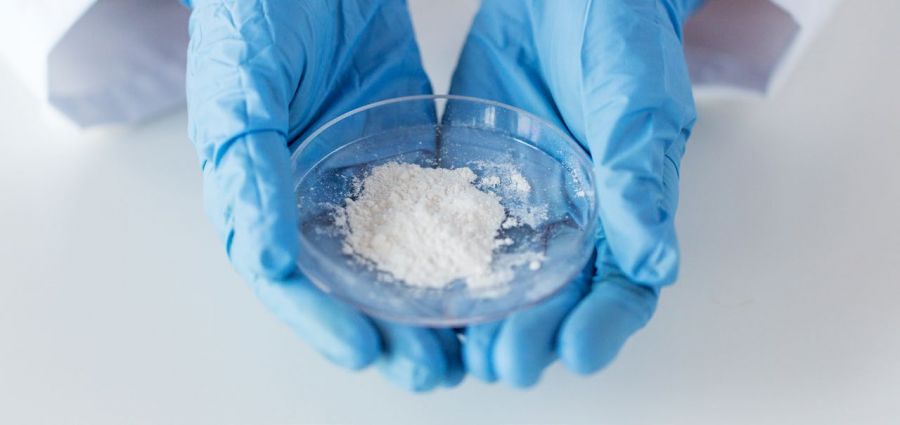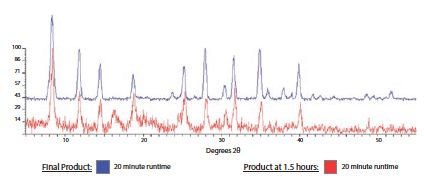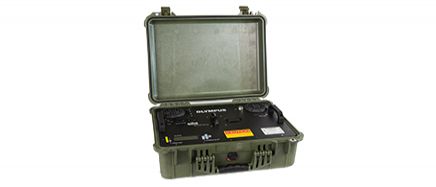The Olympus TERRA® and BTX II™ X-ray diffraction (XRD) analyzers provide quick and easy qualitative and quantitative analysis of synthetic zeolites during the manufacturing process. The ability of our devices to analyze slurry material during the manufacturing process enables the chemist and process engineer to make informed decisions in near real time, saving operation time and reducing costs. Although synthetic zeolites are discussed here, Olympus XRD analyzers can be applied during mid-stream processing for a range of manufactured goods, including pharmaceuticals.
Synthetic Zeolite Manufacturing
Synthetic zeolites are aluminosilicate compounds that have many domestic and industrial applications, including (but not limited to):
- Detergents
- Water purification
- Catalysts
- Non-clumping cat litter
- Solar thermal collectors and adsorption refrigerators
The process used to manufacture synthetic zeolites requires large amounts of energy over many hours. As energy costs can be high, every hour saved during the process reduces the manufacturer’s overall cost.
Benefits of Olympus XRD
Since the time it takes to produce the final product can vary, it is vital that chemists and engineers have access to real-time XRD data so they can:
- Determine if the process has reached completion and can be terminated early
- Assess whether their process needs to be optimized (e.g., add raw materials)
Conventional laboratory-based XRD require large samples that can take a long time to dry, ultimately slowing the process. Using Olympus XRD analyzers the processes is ultimately sped up as only 15 mg is required for analysis. The benefits of Olympus XRD include:
- The ability to analyze slurry material
- Small sample size; only 15 mg of sample is required, so customers can smear samples, leave them for a short amount of time to dry, and then analyze them
- Easy to use, not requiring a skilled technician
- No ongoing servicing requirements—XRD can regularly be performed with minimal downtime
Case Study from a Synthetic Zeolite Manufacturing Plant
The data below is from a synthetic zeolite manufacturing plant that would typically run one of their processes for five hours. However, this process is often completed much quicker.
A sample was taken 1.5 hours into the process, smeared onto a plate, left to dry for 3 minutes, and then analyzed using the Olympus BTX II™ XRD instrument. This sample was then compared to the ideal end product (Figure 1). These patterns illustrate that the sample does not match the end product, indicating that the process is not yet complete. Therefore, the user allowed the process to continue.
A second sample was taken 2.5 hours into the process and analyzed by the BTX II XRD instrument. The results show that sample 2 does match the ideal product, even at short runtimes (Figure 2). With this information, the user was able to finish the process 2.5 hours earlier than they would have otherwise, reducing costs.
Figure 1. Synthetic zeolite patterns. The blue pattern represents the ideal, final product, while the red pattern is a sample that was analyzed after 1.5 hours. This illustrates that, at 1.5 hours, the product is not finished and the process needs to be continued. | Figure 2. Runtime analysis on the 2.5-hour dataset. After even short runtimes the user can see that the product is near completion. |
This example illustrates how Olympus XRD analyzers are being used in mid-stream processing for synthetic zeolite manufacturing. Olympus XRD analyzers can also be applied to mid-stream processing for a range of other manufacturing applications in pharmaceuticals and cement.





